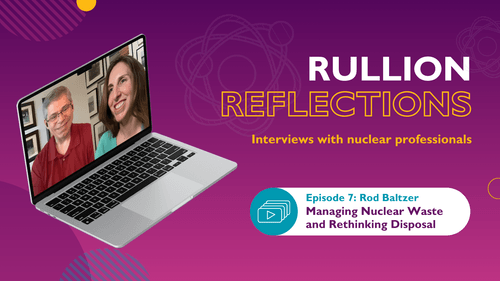International Energy Agency's Energy Employment Report: What It Means for the UK’s Next Decade
The global labour market is expanding rapidly. Employment in energy reached seventy six million people last year, growing at more than twice the rate of the wider economy. Clean technologies are now responsible for the majority of new jobs created. Solar, nuclear, grids, and storage are expanding employment at an unprecedented scale. The IEA captures this shift clearly, noting that “the electricity sector has become the world’s largest energy employer, driven by spectacular growth in clean energy investment.”
Where many see constraint, the report points instead to a remarkable alignment of forces. Countries with the confidence to build training capacity, open new pathways and support people transitioning from adjacent industries are poised to capture long term economic, industrial and social value.
For the United Kingdom in particular, this is not a story about scarcity. It is a story about potential. The UK has one of the most diverse industrial labour markets in the world, a deep engineering heritage, an increasingly ambitious clean energy programme and a workforce that is more mobile than ever before. With the right focus on development and reskilling, the UK can build the teams required for nuclear new build, offshore wind expansion, grid modernisation and clean transport at the pace needed.
Rullion sees this opportunity clearly. Every day across nuclear, renewables, utilities and critical infrastructure, we see talented people ready to move, ready to train and ready to grow. The question is not whether the UK has the talent. It is how quickly we can build the pathways that unlock it.
The Age of Electricity and the Rise of a New Workforce
The headline figures of the report paint a picture of remarkable transformation. Global energy employment reached seventy six million people in 2024 and grew at more than twice the rate of the wider economy. The electricity sector has overtaken fuel supply as the largest energy employer for the first time in history. The IEA captures this shift clearly, stating that “the electricity sector has become the world’s largest energy employer, led by rapid growth in solar, grids and storage.” Solar power alone now employs five million people worldwide, while low emissions power has driven the vast majority of new roles created in the past year.
The IEA calls this era the Age of Electricity. It reflects a structural shift that will define global energy systems for the next half century. As grids expand, renewables scale, and electrification replaces combustion in transport, heating and industry, human capability becomes the central currency of the transition. The technologies exist. The investments exist. The constraint is people.
Yet the report also makes clear that this expansion is unevenly distributed. China dominates the manufacturing base for solar, batteries, heat pumps and other clean technologies. Emerging economies such as India and Indonesia are generating jobs at four to six percent annually. Advanced economies, including the UK, lag significantly behind. With older populations, more rigid labour markets and limited vocational throughput, they have seen energy employment grow at less than one percent. The IEA warns that “advanced economies face the slowest energy workforce growth and the most acute demographic pressures.”
This imbalance exposes a strategic vulnerability. A nation that cannot produce the talent required to build and operate its own energy infrastructure becomes reliant on external supply chains and volatile global markets. It also becomes slower, more expensive and less competitive. The UK’s ambitions in nuclear new build, offshore wind, heat pumps, green transport and grid reinforcement depend on a workforce that does not yet exist at the necessary scale.
A Workforce Expanding, Yet Straining at the Edges
Nowhere are the tensions clearer than in the skilled trades. Electricians, welders, pipefitters, mechanical fitters and commissioning technicians represent the backbone of the energy system. These roles form more than half of the global energy workforce and are also where shortages are most acute. The report notes that “more than six in ten energy firms report persistent hiring difficulties, with applied technical roles the hardest to fill.”
The construction boom across solar, wind, nuclear, grids and storage has created competition so intense that wages have risen sharply in many regions. Grid roles are especially constrained. Transmission and distribution now employ more than eight million people, yet growth is far below what electrification requires. The retirement profile is deeply concerning. The report emphasises that “between today and 2035, two out of every three new power sector hires will be needed just to replace retiring workers.” In advanced economies, the demographic imbalance is even more severe.
These pressures manifest throughout the energy ecosystem. Manufacturing suffers from shortages in transformer specialists, switchgear technicians and high voltage cable jointers. Nuclear projects compete for the same welders and electricians required for offshore wind and defence. EV rollouts hinge on both digital skills and traditional trades. Even heat pumps, often discussed as a simple household retrofit technology, depend on retraining thousands of heating and HVAC engineers.
When labour markets are this tight, delays become systemic. Project timelines lengthen. Costs rise. Productivity suffers. And the credibility of national energy strategies is placed at risk.
Nuclear: A Sector Defined by Expertise and Threatened by Succession
Among all energy subsectors, nuclear is the most exposed to demographic decline. Globally, the nuclear workforce is expanding, yet it remains one of the oldest and most specialised segments of the energy labour market. The report highlights the scale of the challenge, noting that “nuclear has the most severe ageing imbalance, with 1.7 workers nearing retirement for every young entrant.”
For the UK, where nuclear new build is both a national priority and a cornerstone of future energy security, the implications are serious. Hinkley Point C has already demonstrated the scale of the workforce required for a gigawatt scale plant. Sizewell C will demand a similar or larger effort. Small modular reactors will require engineers with advanced competencies across digital control systems, materials science, reactor physics and high integrity construction. Defence nuclear and the emerging fusion sector compete for many of the same people, creating a labour congestion risk that the country cannot afford to ignore.
The IEA points to France as an example of what can happen when maintenance capability and specialist expertise diminish, observing that “skill shortages have contributed to increased outages and reduced output in several advanced nuclear fleets.” This is a warning that the UK should take note of. Nuclear is a sector built on experience, precision and long cycles of talent development. Once expertise erodes, it cannot be regenerated quickly.
If the UK is to deliver its nuclear ambitions, it must prioritise workforce planning with the same seriousness it applies to finance, regulation and site readiness.
Electrification and the Emergence of New Talent Pathways
Despite the severity of the challenges, the report contains a reason for optimism. Electrification does not only consume labour. It also generates new mobility across the wider economy.
Manufacturing offers one of the clearest examples. Almost seventeen and a half million people in global vehicle manufacturing now work on electric vehicle technology. That shift has opened opportunities for workers with expertise in precision assembly, power electronics, automation and quality assurance. These skills transfer naturally into battery lines, grid equipment, robotics and advanced nuclear manufacturing.
Heating engineers are moving into heat pump installation at growing rates. Aerospace and defence engineers are entering grid digitalisation, energy storage and fusion. Technicians and fitters from oil and gas are retraining into offshore wind, subsea cabling, hydrogen and large scale electrical integration.
The IEA captures this shift succinctly, observing that “reskilling and cross sector mobility are now essential features of the energy labour market, driving new supply where traditional pipelines cannot keep pace.” This is one of the most encouraging findings of the report, because it demonstrates that the UK does not have a shortage of underlying talent. Instead, it has a shortage of structured, supported and scalable pathways that help people transition into energy roles.
Pathways, not people, are the true constraint.
The UK’s Workforce Challenge and Opportunity
While the report groups the UK within the broader advanced economies category, its situation is distinctive. It is a mature energy system undergoing significant transformation. Nuclear new build, offshore wind expansion, grid modernisation, electric transport, solar growth and home retrofit programmes all overlap. They draw from overlapping labour pools, yet operate to different timetables and across different suppliers, contractors and regions.
The UK’s workforce demographics compound the problem. The report notes that in advanced economies, “the number of workers approaching retirement is more than double the number of workers under 25.” That ratio is reflected across much of the British energy system. Vocational education output remains too low. And the occupations most vital to national delivery are the very ones most undersupplied: electricians, welders, commissioning engineers, cable jointers, plant operators and advanced technicians.
Yet the UK also possesses one of the most diverse industrial bases of any advanced economy. Defence, aerospace, rail, automotive, manufacturing, construction and telecoms all hold talent that can transition into energy with the right support. These sectors form an untapped reservoir of capability, waiting to be unlocked.
Building the Pathways: A Call to Action
The IEA report offers a quantitative foundation for what UK employers already know. Labour is becoming the defining constraint of the energy transition. But this constraint is not inevitable.
A nation can invest in vocational capacity, or it can accept undersupply. It can create mechanisms that promote reskilling, or it can allow other sectors to outcompete energy for talent. It can coordinate workforce planning across nuclear, renewables, utilities and transport, or it can allow programmes to clash and cannibalise one another. These choices will shape the next decade of UK industrial competitiveness.
For employers, the conversation must shift from talent scarcity to talent creation. Experience and competence can be developed, but only when companies invest in structured training, early careers, cross sector transition and a change in hiring habits. For policymakers, investment in colleges, apprenticeships and regional clusters is no longer optional. For the UK, the costs of inaction will be measured not only in megawatts delayed or cost overruns absorbed, but also in lost strategic advantage.
Rullion’s Perspective: Talent Is Not the Problem. Pathways Are.
At Rullion, we see the reality of this challenge every day. Across energy and critical infrastructure, employers consistently report difficulty finding people. Yet when we look at the broader labour market, the potential talent is everywhere. It sits in sectors with transferable skills, in early careers populations who have never been exposed to energy as an option, in mid career workers seeking change and in communities eager for long term, well paid employment.
This belief guides our models such as Train to Deploy. Instead of competing endlessly for the same small pool of candidates, we create the capability required for the sector, equipping people with the technical and practical skills needed to enter high demand roles. Our Early Careers teams bring young people into industries they might never have considered. Our cross sector programmes help workers transition from oil and gas, defence, aerospace, automotive and manufacturing into clean energy.
We call this approach the Abundance Mindset. It is the belief that talent is plentiful when organisations are prepared to develop it, support it and welcome it. The IEA report reinforces this philosophy. The world is not short of electricians, fitters, technicians or engineers. It is short of ways to turn people into those professions.
The Decade Ahead
The World Energy Employment Report makes one conclusion unmistakable. The race for clean energy is rapidly becoming a race for talent. Capital will not be the limiting factor. Technology will not be the limiting factor. Workforce will be.
For the UK, this is both a challenge and a remarkable opportunity. If we can change how we hire into roles, reform vocational education, scale reskilling, coordinate workforce planning and create genuine industrial clusters, it can not only deliver its energy transition but lead it.
And if it builds the pathways, the people will come.








